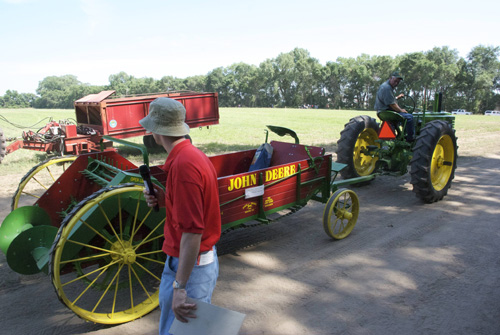Imagine a world where spreading manure on a field doesn't also spread odor. Think about retaining 90 percent of the nutrient value of the manure once it is on the field.
Is it possible?
The staff at USDA's Booneville, Ark., research center think so. The researchers, led by Dan Pote, are trying out a "subsurfer" (nickname for their prototype subsurface applicator) for poultry litter applications. Pote spoke last Wednesday (July 20) at the 2011 North American Manure Exposition, in Fremont, Neb.

Poultry litter is obviously different from dairy and feedlot manure, but the concept is the same. The poultry litter starts at 40 percent moisture, including feathers, bedding, and other material. They then grind the litter into smaller pieces – something that you could obviously do with both feedlot and dairy manure. From there, litter is loaded into the bed of the subsurfer and basically planted through a patented process.
We learned from a graduate student evaluating a large sample of separated solids from dairy farms that the average moisture was 72 percent – obviously much stickier than the dry poultry manure. But with some drying (composting) and grinding, you may have a chance to use solids with direct application into the field (literally).

At the Expo, they tried beef feedlot manure for the first time ever and it seemed to work just fine. ARS has already thought to include other species, and Cornell should be doing research soon. The Cornell subsurfer is under construction, and they hope to have data to share with us later this year.
The Expo shared new and interesting information on many aspects of manure handing and hauling. We have already contacted speakers to share their presentations as articles in future issues of Hoard's Dairyman.
Finally, below is an example of how far we've come in just 70 years. Where will the next 70 years of manure application take us?

Is it possible?
The staff at USDA's Booneville, Ark., research center think so. The researchers, led by Dan Pote, are trying out a "subsurfer" (nickname for their prototype subsurface applicator) for poultry litter applications. Pote spoke last Wednesday (July 20) at the 2011 North American Manure Exposition, in Fremont, Neb.

Poultry litter is obviously different from dairy and feedlot manure, but the concept is the same. The poultry litter starts at 40 percent moisture, including feathers, bedding, and other material. They then grind the litter into smaller pieces – something that you could obviously do with both feedlot and dairy manure. From there, litter is loaded into the bed of the subsurfer and basically planted through a patented process.
We learned from a graduate student evaluating a large sample of separated solids from dairy farms that the average moisture was 72 percent – obviously much stickier than the dry poultry manure. But with some drying (composting) and grinding, you may have a chance to use solids with direct application into the field (literally).

At the Expo, they tried beef feedlot manure for the first time ever and it seemed to work just fine. ARS has already thought to include other species, and Cornell should be doing research soon. The Cornell subsurfer is under construction, and they hope to have data to share with us later this year.
The Expo shared new and interesting information on many aspects of manure handing and hauling. We have already contacted speakers to share their presentations as articles in future issues of Hoard's Dairyman.
Finally, below is an example of how far we've come in just 70 years. Where will the next 70 years of manure application take us?









